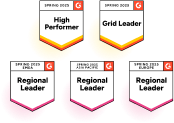
Key Observability Scaling Requirements for Your Next Game Launch: Part I

After months–or potentially, years–of hard work by teams across a gaming enterprise, when the day arrives for a game launch, the last thing your enterprise needs is slowdowns, glitches, outages or poor performance. It’s the death knell for any game, because for your avid gaming customers, there’s always something else (read: a game that isn’t yours) to check out.
Collecting and analyzing telemetry data – including logs, metrics, and traces – is critical to gain visibility into your system’s health and performance, and to quickly troubleshoot issues impacting user experience.
In this series of posts, we’ll look at the key observability scaling requirements needed so your launch goes off without a hitch–and so gamers keep coming back to the fruits of your team’s labor.
Unified Data in One Place for Logs, Metrics & Traces
A single platform for all your key observability signals, including logs, metrics and traces, can simplify your processes, improve your MTTR and will ease the process of sharing data and insights across engineers.
When you have a big game launch, it’s much easier to monitor performance when all of your signals are in one place.
If you’re monitoring those signals separately, it doesn’t give you the best and most complete picture of what’s happening when your game launches – and requires engineers to switch across different platforms and interfaces during troubleshooting.
Data Analysis Capabilities to Troubleshoot at the Speed You Need
When it comes to problems that might arise for your game, the ability to confidently and quickly troubleshoot production issues can’t be ignored. It’s essential to surface critical data fast to minimize service interruptions in these circumstances.
This can be achieved with analytics that help the user navigate their data in different ways, including:
- Near real-time data search and visualization – slow queries and alerts can prevent engineers from quickly getting the insights they need during high pressure troubleshooting situations
- Correlation across logs, metrics, and traces to dive into root cause analysis
- Correlate data against recent deployments and new configurations to understand how these changes impact production
- Ability to pinpoint latency within application requests
- Elimination of noisy data that slows troubleshooting
Want to learn more? Sign up for a free trial of Logz.io to see how our observability platform can scale to meet your game launch needs.
Get started for free
Completely free for 14 days, no strings attached.




